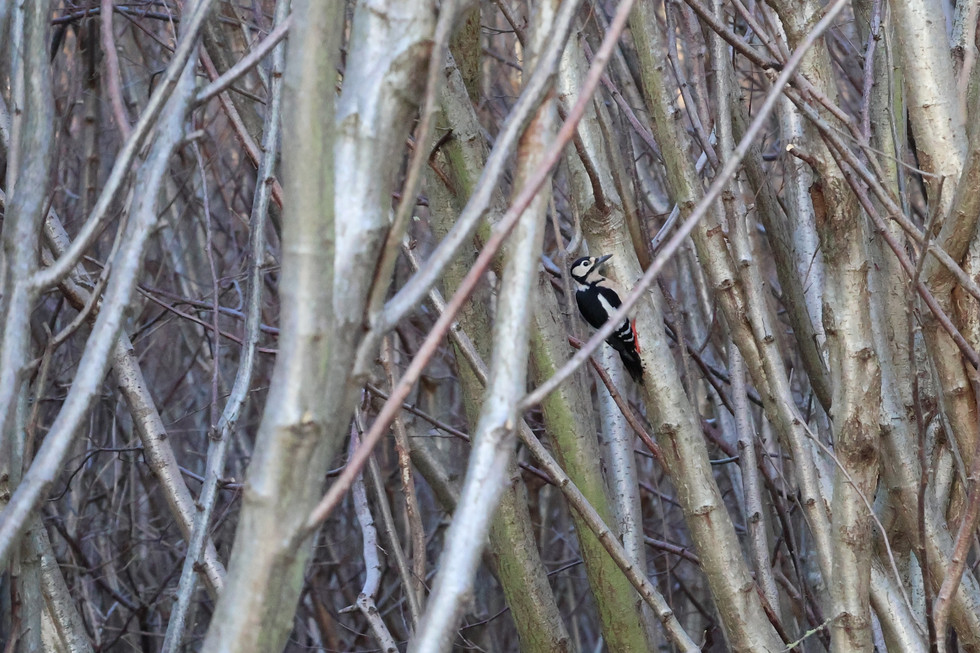The remains of the hazel
- Crone

- Feb 10, 2024
- 2 min read
I was looking at these stumps and thinking about the black marks in some rings. I'm no dendrologist, so I can't tell how old this hazel is, but those black marks seem significant. What happened to the stems in those years? Is it pest attacks? Drought? Water-logging? I tried to work out if they all meant the same year - but stems aren't necessarily all the same age. So that doesn't help. Well, I suppose you could count back from the outside and say, "This was x years ago." Then you could find out.
Anyway, I sent the pictures to Dan the Tree-man!
In addition, I did some more bird-watching. Not a lot more successful, it has to be said.
That is in fact a woodpecker. The second image. They are very shy. But so handsome!
It really is very hard photographing birds. They seem to favour flying away, which is inconsiderate of them.
It is even harder filming them.
It was glorious weather and I sat for ages just watching - and trying to "capture" (yes, I still have my concerns about the ethical position of the photographer) - the birds. If I'd had food and more clothes, and time, I'd have stayed until dark.
How I feel about this place has set me thinking.
When you invest in a place - time, labour, attention - something interesting happens. It's not space, but place. There is a... connection, a heart-connection. I thought about what I said about badgers in my presentation (see here and skip to the badger bit). How they emerge from place, are part of place, are embedded in place. Reading Marisol de la Cadena's Earth Beings: Ecologies of Practice across Andean Worlds I was struck by some passages related to this. She quotes a dude called Basso who says:
"As places animate the ideas and feelings of persons who attend to them, these same ideas or feelings animate the place on which attention has been bestowed... this process of inter-animation is related directly to the fact the familiar places are experienced as inherently meaningful, their significance and value being found in (and, it may seem, to emanate from) the form and arrangement of their observable characteristics." (p.100)
Then she says:
Place is the event of in-ayllu ["ayllu" means the whole community, living and non-living in a location] relationality from which tirakuna [earth beings - animals, mountains, trees, rivers, valleys] and runakuna [people] also emerge - there is no separation between runakuna and tirakuna, or between both and place. they are all in-ayllu - the relation from which they emerge being. (p.101 - italics in original.)
Being in-ayllu, persons are not from a place: they are the place that relationally emerges through them, the runakuna and other-than-human that make the place. Rather than being instilled in the individual subject, the substance of the runakuna and other-than-humans that make an ayllu is the co-emergence of each with the others - and this includes land... (p.102 - italics in original.)
Right. So, put that in your pipe and smoke it.















Cool woodpecker! Maybe over the years woodpeckers leave marks in the hazel that shows up in the rings.( No, that's a stretch of a guess. Who knows.) And yes, when people are very familiar with a certain piece of land, I suppose there's a reciprocal relationship 💚 ps If there was a "pipe" emoji" I'd post it, ha ha.